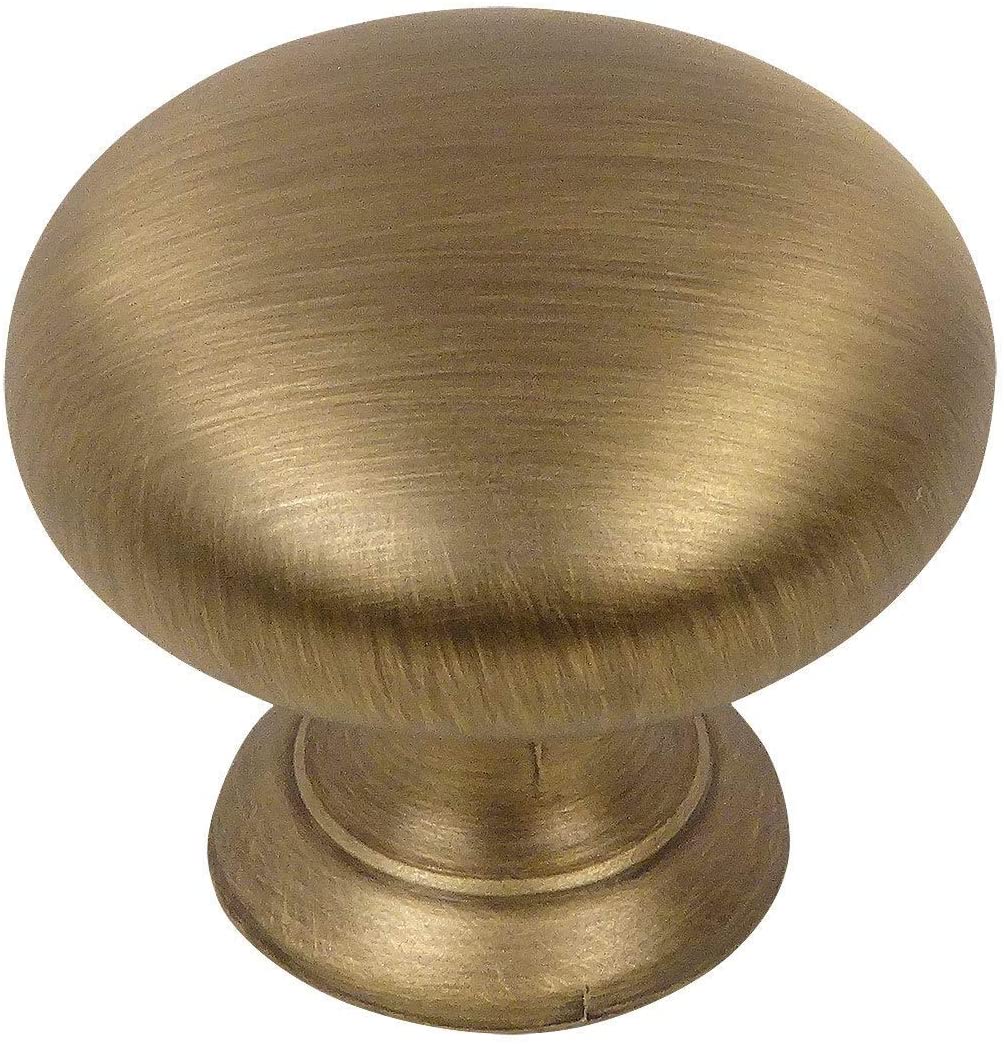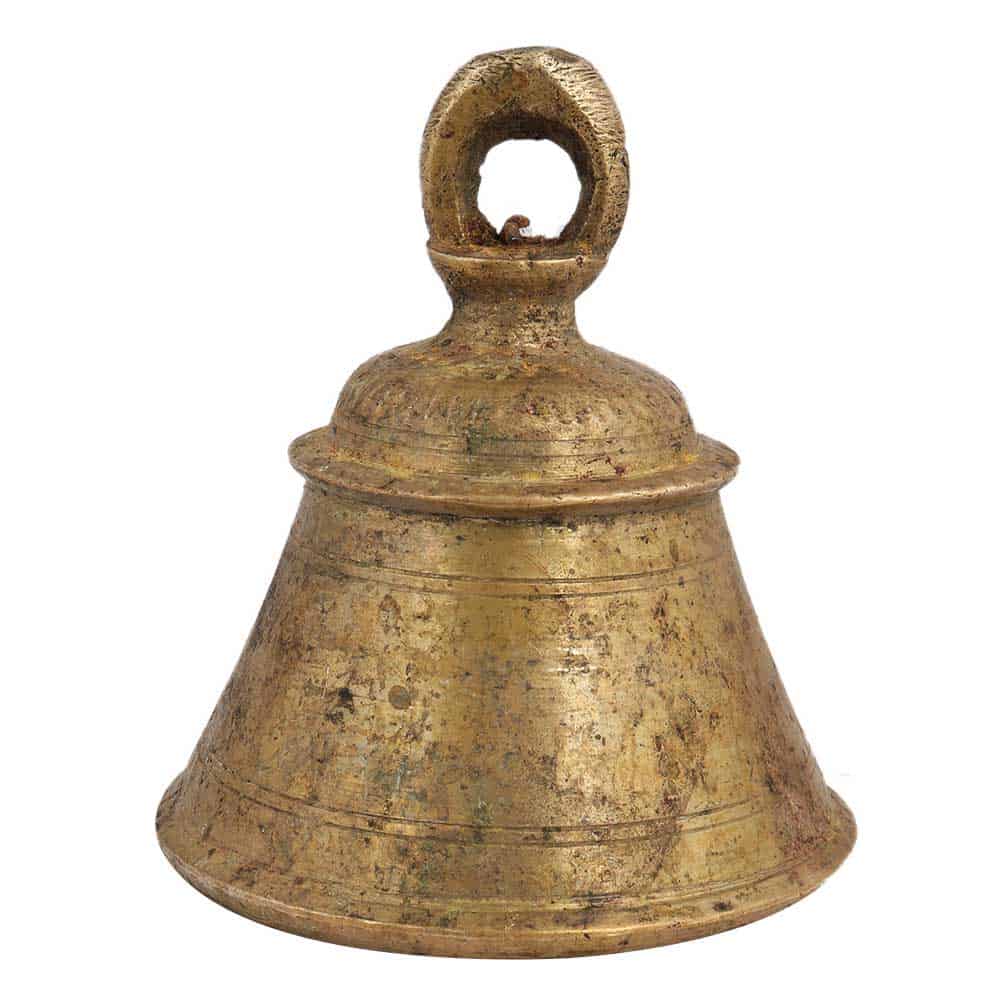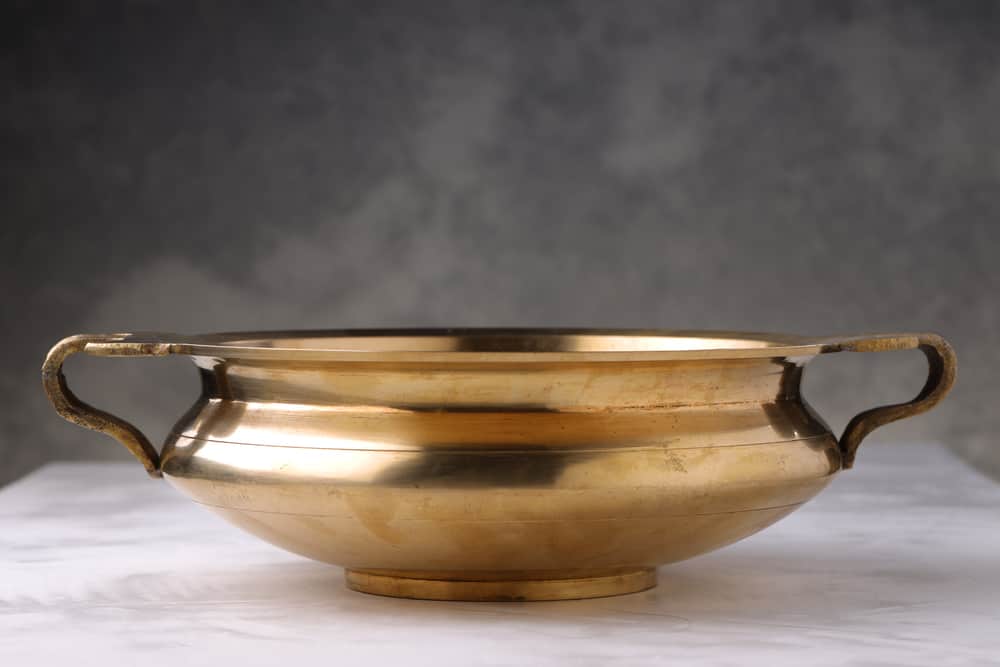A box arrives at your door, and it’s from your mother. She’s sent you some antiques from your grandmother. You’re so excited when you see some beautiful musical instruments.
Unfortunately, you aren’t sure if the golden-brown piece of artwork in your hands is valuable or not. That can also be nerve-wracking if you’ve found a piece at a thrift store that you’ve fallen in love with.
If you find yourself in this or a similar situation, take a deep breath. It’s important to know how to decide whether an antique is a brass object or not, and also how to clean the item.
You can easily learn how to make that determination and also how to wash and polish your piece, which will make you more confident in your heirloom or if you’re purchasing an item at a flea market.
Table of Contents
What is Antique Brass?
Antique brass is a mixture of copper, zinc, tin, and other possible elements. Fireplace equipment, lighting fixtures, hardware, jewelry, doorknobs – all have been made using antique brass.
Most antique brass items were made around the mid-18th century when Birmingham was a center for metalworking. In those days, aged brass was a lot smoother, having been meticulously cleaned.
After the 19th century, we see antique brass start to get rougher. This is a good way of telling when your piece was made. You might also see maker’s marks where a stamp was used.
Early brass items can usually be seen with a seam running along a side or edge of them. Before factories came along, all the brass was worked by hand, and there was no way to get rid of that seam.
By the mid-19th century, Birmingham had become the world leader in brassware. Surprisingly, these Victorian brass items were made in Birmingham all the way up until World War I.
Brass is stronger than regular copper and it’s less likely to crack or split. While it can get pretty shiny if it’s polished, it generally has a nice matte look that doesn’t blind you with reflections of light.
What Color is Antique Brass?

This can really vary, depending on what the item is and when the item was made. Generally speaking, old brass has a deep golden brown color. Unlike bronze, antique brass has undertones of brown and yellow and can even have hues of red in its color.
Also, if it’s been polished or has lacquers on it, it’ll have a shine to it. The polish affects the color strongly, and the lacquers help protect it from corrosion.
If you’re curious about exactly what color it should be, take a look at the images of antique brass items in this article.
Is Antique Brass Valuable?
What a great question! It can be really difficult to decide the worth of brass antiquity. If the piece was made before the 19th century, it will be a lot more valuable while later items will be less valuable.
This price disparity is because items from the 18th century were all made by hand. Pieces from the 19th century were created in factories, which makes them less refined and thus less desirable. The newer items are also rougher and dirtier, reducing their prices.
In order to get the most accurate pricing for your item, it might be helpful to take it to an antique dealer and get it appraised. The expert will be able to tell you exactly how much your piece is worth. If you don’t have any appraisers in your area, there are a lot of good online options as well.
How to Identify Antique Brass

Now that we know what antique brass is, what colors it can be, and if it’s valuable, let’s discuss how to tell if what’s in your hands actually is brass. Here are good things to know when you’re trying to determine whether or not your piece of furniture or art is brass:
Start With a Magnet
Antique brass is not magnetic. That means when you’re checking over your item, the simplest place to start is with a magnet! Head over to your fridge or find the closest magnet and run it over the surface of the piece. If the magnet sticks, it’s not brass. If it doesn’t stick, move on to the second step!
Weight
Another really easy step to take is just feeling how heavy the item is. If it’s fairly easy to pick up, there’s a really good chance you’re not holding brass. Because of the metallic makeup of solid brass, it’s heavier than a lot of other materials used around the same time.
Color
Your item has to be nicely cleaned for this to be useful, but if it is, hold it in the light and look at the colors. If it has a golden hue to it, there’s a good chance it’s brass. You may need to move the item around in the light to get the best angle, but if you see any golden in it at all, you can be even more confident it is brass.
Natural Imperfections
Brass shows tarnish a lot more than other metals. When looking at your piece, you should see plenty of scratches, oxidation, tarnish, or even discoloration. You may also see patches of dullness caused by exposure to oxygen and skin oil.
Vintage Feel
This is a trickier thing to tell when you’re holding the item in question. When you run your finger along with it, antique brass will feel older, meaning it’ll have some rougher spots to it. Especially if it was made during or after the 19th century, your finger will drag in places.
It can be hard to pinpoint these spots, so you may need to feel all over the piece. It can be very difficult to decide if your fire poker is antique brass; however, make sure you’re looking at those key things: magnetism, weight, hue, tarnish, and feel.
If the item is yellow and shiny, it’s probably brass. It’s also important to note that brass usually tarnishes black, while other metals tarnish in different colors.
How To Clean Antique Brass
You have your antique, and you find yourself in one of two situations. Either you know it’s brass or you’re still not totally sure. In both cases, the next best thing to do is clean the item! If you know it’s brass, you can clean it and polish it to make it look beautiful again. If you aren’t sure, cleaning it will help you finalize your decision.
When you’re cleaning brass, the most important thing is to do it by hand! Don’t put it through a machine or use a power hose. You want to be delicate and careful with the item, especially if it’s a lot older. You don’t want to ruin your item’s patina!
Your first step will be to use a good brass or copper cleaner. If you can’t find any at a store near you, Amazon has some awesome products to choose from. Be gentle with the polish. If your piece is extra tarnished, it may take a couple of rounds with the polish to get it back to those amazing golden-brown hues.
After you’ve cleaned your item with the polish, take a normal duster, and dust the remaining polish off. You just need to make sure the duster is soft and again be as gentle with it as possible.
Once you’ve removed the polish, your brass antique should be shiny and the gold should really stand out. If it’s still not that golden color, you probably have something that isn’t brass, sorry!
One last note: don’t, for any reason, use homemade alternatives to clean your brass. Lemon juice and baking soda are a combination often recommended, but they will destroy the outer layer of your brass, leaving it looking terrible.
Warm water is also popular, but please don’t use it on the brass. If your piece is older, the water will seep into the soldering and cause it to fall apart. It’s always better safe than sorry when you’re cleaning your antique brass.
Wrapping Up
It’s always an exciting thing to receive an heirloom from a loved one or find a beautiful piece of furniture or art at a thrift store; however, that excitement can often turn to uncertainty or dread because you aren’t sure what the item is made out of or if it has any value. Thankfully, you now have the tools to not only tell if it’s antique brass, but also if it’s valuable and how to clean the item as well!
When you’re looking at that piece, remember:
- Brass has no magnetism
- It’s very heavy
- It has golden undertones and can even look reddish
- It will have natural imperfections due to tarnish
- It will have a rough, vintage feel to it
- When cleaning the item, be careful and gentle, take your time, and don’t use homemade items
If you remember these things, you’ll be able to confidently decide whether or not your antiquity is brass or not. You can now be certain when people come over to your house and ask you if your items are valuable, or you can feel comfortable taking them to an antique dealer and asking for the correct price!
